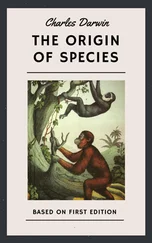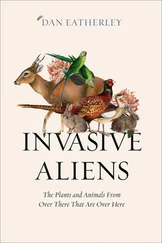Charles Darwin - The Variation of Animals and Plants under Domestication — Volume 1
Здесь есть возможность читать онлайн «Charles Darwin - The Variation of Animals and Plants under Domestication — Volume 1» — ознакомительный отрывок электронной книги совершенно бесплатно, а после прочтения отрывка купить полную версию. В некоторых случаях можно слушать аудио, скачать через торрент в формате fb2 и присутствует краткое содержание. Жанр: foreign_antique, foreign_prose, на английском языке. Описание произведения, (предисловие) а так же отзывы посетителей доступны на портале библиотеки ЛибКат.
- Название:The Variation of Animals and Plants under Domestication — Volume 1
- Автор:
- Жанр:
- Год:неизвестен
- ISBN:нет данных
- Рейтинг книги:5 / 5. Голосов: 1
-
Избранное:Добавить в избранное
- Отзывы:
-
Ваша оценка:
- 100
- 1
- 2
- 3
- 4
- 5
The Variation of Animals and Plants under Domestication — Volume 1: краткое содержание, описание и аннотация
Предлагаем к чтению аннотацию, описание, краткое содержание или предисловие (зависит от того, что написал сам автор книги «The Variation of Animals and Plants under Domestication — Volume 1»). Если вы не нашли необходимую информацию о книге — напишите в комментариях, мы постараемся отыскать её.
The Variation of Animals and Plants under Domestication — Volume 1 — читать онлайн ознакомительный отрывок
Ниже представлен текст книги, разбитый по страницам. Система сохранения места последней прочитанной страницы, позволяет с удобством читать онлайн бесплатно книгу «The Variation of Animals and Plants under Domestication — Volume 1», без необходимости каждый раз заново искать на чём Вы остановились. Поставьте закладку, и сможете в любой момент перейти на страницу, на которой закончили чтение.
Интервал:
Закладка:
With respect to Jackals, Isidore Geoffroy Saint-Hilaire (1/21. For numerous and interesting details on the resemblance of dogs and jackals see Isid. Geoffroy St. — Hilaire 'Hist. Nat. Gen.' 1860 tome 3 page 101. See also 'Hist. Nat. des Mammiferes' par Prof. Gervais, 1855 tome 2 page 60.) says that not one constant difference can be pointed out between their structure and that of the smaller races of dogs. They agree closely in habits: jackals, when tamed and called by their master, wag their tails, lick his hands, crouch, and throw themselves on their backs; they smell at the tails of other dogs, and void their urine sideways; they roll on carrion or on animals which they have killed; and, lastly, when in high spirits, they run round in circles or in a figure of eight, with their tails between their legs. (1/22. Also Guldenstadt 'Nov. Comment. Acad. Petrop.' tome 20 pro anno 1775 page 449. Also Salvin in 'Land and Water' October 1869.) A number of excellent naturalists, from the time of Guldenstadt to that of Ehrenberg, Hemprich, and Cretzschmar, have expressed themselves in the strongest terms with respect to the resemblance of the half-domestic dogs of Asia and Egypt to jackals. M. Nordmann, for instance, says, "Les chiens d'Awhasie ressemblent etonnamment a des chacals." Ehrenberg (1/23. Quoted by De Blainville in his 'Osteographie, Canidae' pages 79, 98.) asserts that the domestic dogs of Lower Egypt, and certain mummied dogs, have for their wild type a species of wolf (C. lupaster) of the country; whereas the domestic dogs of Nubia and certain other mummied dogs have the closest relation to a wild species of the same country, viz. C. sabbar, which is only a form of the common jackal. Pallas asserts that jackals and dogs sometimes naturally cross in the East; and a case is on record in Algeria. (1/24. See Pallas in 'Act. Acad. St. Petersburgh' 1780 part 2 page 91. For Algeria, see Isid. Geoffroy St. — Hilaire 'Hist. Nat. Gen.' tome 3 page 177. In both countries it is the male jackal which pairs with female domestic dogs.) The greater number of naturalists divide the jackals of Asia and Africa into several species, but some few rank them all as one.
I may add that the domestic dogs on the coast of Guinea are fox-like animals, and are dumb. (1/25. John Barbut 'Description of the Coast of Guinea in 1746.') On the east coast of Africa, between latitude 4 deg and 6 deg south, and about ten days' journey in the interior, a semi-domestic dog, as the Rev. S. Erhardt informs me, is kept, which the natives assert is derived from a similar wild animal. Lichtenstein (1/26. 'Travels in South Africa' volume 2 page 272.) says that the dogs of the Bosjemans present a striking resemblance even in colour (excepting the black stripe down the back) with the C. mesomelas of South Africa. Mr. E. Layard informs me that he has seen a Caffre dog which closely resembled an Esquimaux dog. In Australia the Dingo is both domesticated and wild; though this animal may have been introduced aboriginally by man, yet it must be considered as almost an endemic form, for its remains have been found in a similar state of preservation and associated with extinct mammals, so that its introduction must have been ancient. (1/27. Selwyn, Geology of Victoria; 'Journal of Geolog. Soc.' volume 14 1858 page 536 and volume 16 1860 page 148; and Prof. M'Coy in 'Annals and Mag. of Nat. Hist.' (3rd series) volume 9 1862 page 147. The Dingo differs from the dogs of the central Polynesian islands. Dieffenbach remarks ('Travels' volume 2 page 45) that the native New Zealand dog also differs from the Dingo.)
From this resemblance of the half-domesticated dogs in several countries to the wild species still living there, — from the facility with which they can often be crossed together, — from even half-tamed animals being so much valued by savages, — and from the other circumstances previously remarked on which favour their domestication, it is highly probable that the domestic dogs of the world are descended from two well-defined species of wolf (viz. C. lupus and C. latrans), and from two or three other doubtful species (namely, the European, Indian, and North African wolves); from at least one or two South American canine species; from several races or species of jackal; and perhaps from one or more extinct species. Although it is possible or even probable that domesticated dogs, introduced into any country and bred there for many generations, might acquire some of the characters proper to the aboriginal Canidae of the country, we can hardly thus account for introduced dogs having given rise to two breeds in the same country, resembling two of its aboriginal species, as in the above- given cases of Guiana and of North America. (1/28. These latter remarks afford, I think, a sufficient answer to some criticisms by Mr. Wallace, on the multiple origin of dogs, given in Lyell's 'Principles of Geology' 1872 volume 2 page 295.)
It cannot be objected to the view of several canine species having been anciently domesticated, that these animals are tamed with difficulty: facts have been already given on this head, but I may add that the young of the Canis primaevus of India were tamed by Mr. Hodgson (1/29. 'Proceedings Zoological Soc.' 1833 page 112. See also on the taming of the common wolf, L. Lloyd 'Scandinavian Adventures' 1854 volume 1 page 460. With respect to the jackal, see Prof. Gervais 'Hist. Nat. Mamm.' tome 2 page 61. With respect to the aguara of Paraguay see Rengger's work.), and became as sensible of caresses, and manifested as much intelligence, as any sporting dog of the same age. There is not much difference, as we have already shown and shall further see, in habits between the domestic dogs of the North American Indians and the wolves of that country, or between the Eastern pariah dogs and jackals, or between the dogs which have run wild in various countries and the several natural species of the family. The habit of barking, however, which is almost universal with domesticated dogs, forms an exception, as it does not characterise a single natural species of the family, though I am assured that the Canis latrans of North America utters a noise which closely approaches a bark. But this habit is soon lost by dogs when they become feral and is soon reacquired when they are again domesticated. The case of the wild dogs on the island of Juan Fernandez having become dumb has often been quoted, and there is reason to believe (130. Roulin, in 'Mem. present. par divers Savans' tome 6 page 341.) that the dumbness ensued in the course of thirty-three years; on the other hand, dogs taken from this island by Ulloa slowly reacquired the habit of barking. The Mackenzie-river dogs, of the Canis latrans type, when brought to England, never learned to bark properly; but one born in the Zoological Gardens (1/31. Martin 'History of the Dog' page 14.) "made his voice sound as loudly as any other dog of the same age and size." According to Professor Nillson (1/32. Quoted by L. Lloyd in 'Field Sports of North of Europe' volume 1 page 387.), a wolf-whelp reared by a bitch barks. I. Geoffroy Saint-Hilaire exhibited a jackal which barked with the same tone as any common dog. (1/33. Quatrefages 'Soc. d'Acclimat.' May 11, 1863 page 7.) An interesting account has been given by Mr. G. Clarke (1/34. 'Annals and Mag of Nat. Hist.' volume 15 1845 page 140.) of some dogs run wild on Juan de Nova, in the Indian Ocean; "they had entirely lost the faculty of barking; they had no inclination for the company of other dogs, nor did they acquire their voice" during a captivity of several months. On the island they "congregate in vast packs, and catch sea-birds with as much address as foxes could display." The feral dogs of La Plata have not become dumb; they are of large size, hunt singly or in packs, and burrow holes for their young. (1/35. Azara 'Voyages dans l'Amer. Merid.' tome 1 page 381; his account is fully confirmed by Rengger. Quatrefages gives an account of a bitch brought from Jerusalem to France which burrowed a hole and littered in it. See 'Discours, Exposition des Races Canines' 1865 page 3.) In these habits the feral dogs of La Plata resemble wolves and jackals; both of which hunt either singly or in packs, and burrow holes. (1/36. With respect to wolves burrowing holes see Richardson 'Fauna Boreali-Americana' page 64; and Bechstein 'Naturgeschichte Deutschlands' b. 1 s. 617.) These feral dogs have not become uniform in colour on Juan Fernandez, Juan de Nova, or La Plata. (1/37. See Poeppig 'Reise in Chile' b. 1 s. 290; Mr. G. Clarke, as above; and Rengger, s. 155.) In Cuba the feral dogs are described by Poeppig as nearly all mouse-coloured, with short ears and light-blue eyes. In St. Domingo, Col. Ham. Smith says (1/38. Dogs, 'Nat. Library' volume 10 page 121; an endemic South American dog seems also to have become feral in this island. See Gosse 'Jamaica' page 340.) that the feral dogs are very large, like greyhounds, of a uniform pale blue-ash, with small ears, and large light-brown eyes. Even the wild Dingo, though so anciently naturalised in Australia, "varies considerably in colour," as I am informed by Mr. P.P. King: a half-bred Dingo reared in England (1/39. Low 'Domesticated Animals' page 650.) showed signs of wishing to burrow.
Читать дальшеИнтервал:
Закладка:
Похожие книги на «The Variation of Animals and Plants under Domestication — Volume 1»
Представляем Вашему вниманию похожие книги на «The Variation of Animals and Plants under Domestication — Volume 1» списком для выбора. Мы отобрали схожую по названию и смыслу литературу в надежде предоставить читателям больше вариантов отыскать новые, интересные, ещё непрочитанные произведения.
Обсуждение, отзывы о книге «The Variation of Animals and Plants under Domestication — Volume 1» и просто собственные мнения читателей. Оставьте ваши комментарии, напишите, что Вы думаете о произведении, его смысле или главных героях. Укажите что конкретно понравилось, а что нет, и почему Вы так считаете.












